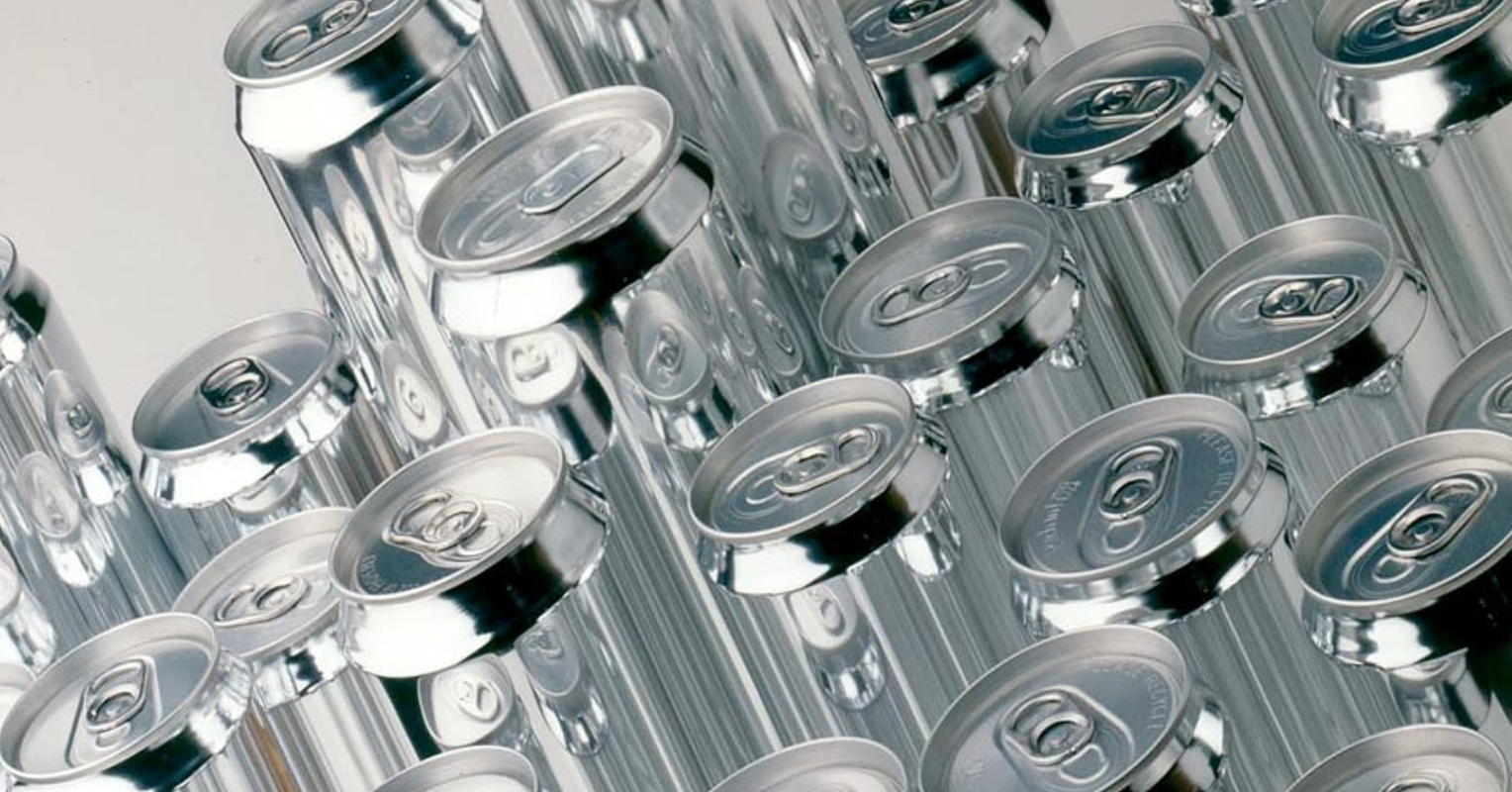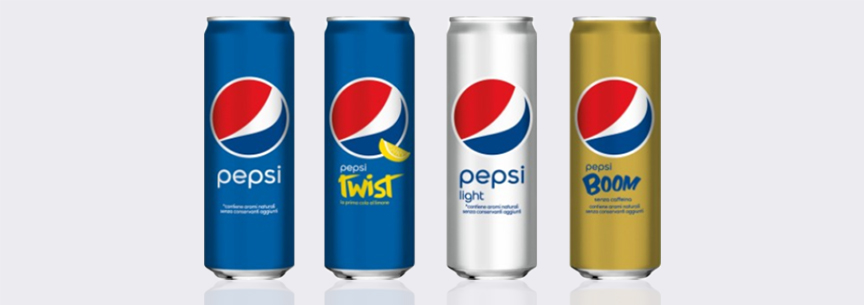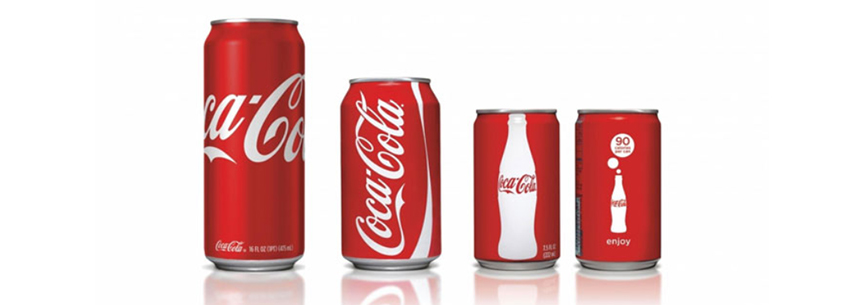Which beverage can sizes do Europeans prefer?
One of the many strategic options that beverage brands have elected has been to diversify the can sizes that they use so as to appeal to different target groups. Some can sizes are more dominant than others in certain countries. Others have been established as typical or instantly recognisable formats for certain beverage products. But which sized cans do people in different European countries prefer? Let’s find out.
The soft drinks sector has been dominated by the now traditional 330ml standard can size for decades. But now, the serving sizes for soft drinks vary in every country and across different target groups.

330ml cans make room for smaller ones
Although the 330ml standard cans are still going strong in all of Europe, the 150ml, 200ml and 250ml slim cans are growing in importance for different kinds of drinks. These sizes appeal particularly to a younger target group as they are seen as a modern and innovative pack. In fact, since the 1990s the 250ml can size has slowly become more and more common as a format for soft drinks. This is mainly due to energy drinks becoming more popular. Red Bull started with a 250ml can that is now popular all over Europe. In Turkey, both Coca-Cola and Pepsi are canning their beverages in even smaller serving sizes (200ml cans). These smaller cans have proven to be increasingly popular and it looks like this trend will only continue.
In Russia, consumers have shown an increasing fondness for smaller sizes too. The soft drinks sector there was boosted in part following Coca Cola’s introduction of the 250ml can.
Sleek cans: elegant and refined
The PepsiCo brands (Mountain Dew, 7Up, …) have chosen to change from a 330ml regular can to a 330ml sleek-style can in a number of key European markets. These sleek-style cans are easier to take with you and at the same time are perceived as more elegant and refined.
 Pepsi 330ml sleek-style cans, launched in 2015 in Italy, are now found across Europe.
Pepsi 330ml sleek-style cans, launched in 2015 in Italy, are now found across Europe.
Perfect for on-the-go consumption
The European-wide trend is towards smaller can sizes, as a smaller serving size has benefits for the consumer. It can be offered at a lower price point and proves to be the perfect choice for on-the-go-consumption, which is especially appealing to a young target group. The evolution of can formats is not a soft drinks phenomenon, it’s also happening in the beer market too. In Turkey, instead of the standard 330ml beer cans, new 330ml sleek versions are popular and appreciated. It shows that by changing the can format a different feeling or image can be portrayed to consumers, even if the fill volume remains the same.
Young and health conscious Europeans show a fondness for smaller cans
Another great reason for offering a beverage in a smaller can is the European-wide trend towards a healthier lifestyle. Consumers nowadays are more and more health conscious. Many companies (for example Coca-Cola) have introduced ‘mini cans’ with lower fill volumes and therefore lower calorie servings.
 Coca-Cola Mini 150ml cans.
Coca-Cola Mini 150ml cans.
Consumers are ever more aware of the effects of waste on the planet. Smaller packages allow consumers to choose the size that suits their thirst; meaning less beverage waste . On top of that, the metal used to manufacture beverage cans is 100% recyclable. This metal can be used over and over again, without any loss of quality and can come back again as a new beverage can is as little as 60 days!
Big cans for cider, beer and energy drinks
In Europe, the second most popular standard can size is 500ml. This size is especially popular for beer and cider packages. The size of a pint is 568ml and this makes the 568ml can a popular can size for beer in the UK and Ireland. The bigger cans (500ml or 568ml) allow for maximum exposure for brands and are extremely cost efficient in both filling and distribution. In the UK, 440ml can is also a popular for both beer and increasingly cider.
In some countries like Germany, Turkey and Russia, you can also find cans that contain up to 1 litre of beer. Carlsberg launched a new 1 litre two piece can of its brand Tuborg in Germany to attract impulse buyers. It helped the brand to – literally – tower above the other brands.
 In 2011, Carlsberg launched a litre can for its beer brand Tuborg in Germany, after seeing good results in Russia.
In 2011, Carlsberg launched a litre can for its beer brand Tuborg in Germany, after seeing good results in Russia.
More energy drinkers
The energy drinks category – almost exclusively packaged in cans – continues to see growth throughout Europe. It is estimated that this category will grow at a Compound Annual Growth Rate (CAGR) of 3.8% in between 2018 and 2023 (source: https://www.mordorintelligence.com/industry-reports/europe-energy-drink-market). Thirsty energy drink consumers seem to have a preference for larger cans, it’s why you’ll find that many producers have added larger formats, such as 500ml cans, to their offering. Monster Energy is a good example. The main player in the market, Red Bull, successfully introduced the 355ml sleek-style can into its range – and they went even bigger with 473ml and 591ml can formats.
 From the start, Monster Energy has embraced the 500ml can to stand out on the shelves.
From the start, Monster Energy has embraced the 500ml can to stand out on the shelves.
Variety is the spice of life
Various other can sizes are to be found in Europe, ranging from only 150ml up to 1 litre. While the can format is in partly influenced by the country of sale, it’s often trends and the variety and diversity of target groups that plays a more significant role in deciding which can size is deployed for each beverage or brand. European consumers now have numerous options when it comes to can sizes and continue to appreciate the portability, protection, environmental benefits and convenience of beverage cans. It’s true to say that there is a can for every occasion!
Metal Packaging Europe gives Europe’s rigid metal packaging industry a unified voice, by bringing together manufacturers, suppliers, and national associations. We proactively position and support the positive attributes and image of metal packaging through joint marketing, environmental and technical initiatives.
Post time: Dec-03-2021






